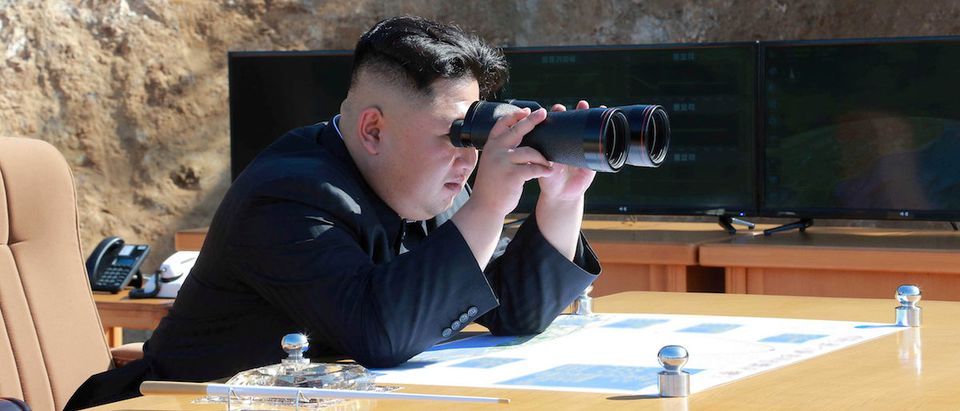Any nuclear conflict with North Korea would be an “unimaginable” apocalypse in the recent words of Chairman of the Joint Chiefs of Staff, General Joseph Dunford.
Yet the nuclear threat from North Korea’s erratic tyrant Kim Jong-Un is becoming more imminent every day. After fewer than six years in power, Kim Jong-Un has overseen more missile tests than his father or grandfather combined including a July 4 test of an Intercontinental Ballistic Missile (ICBM) capable of hitting Alaska. The “American bastards must be quite unhappy,” Kim stated on Independence Day, and a subsequent July 27 (a North Korean holiday) test launched an ICBM capable of hitting America’s west coast. Given recent intelligence assessments that North Korea has successfully miniaturized nuclear warheads for ICBMs, American intelligence analysts predict that North Korea could target the United States with nuclear ICBMs by 2018.
The key to America’s missile defenses against North Korea is the Ground-Based Midcourse Defense (GMD) system. GMD’s 32 Ground-based Interceptor (GBI) missiles at Fort Greely, Alaska, (with eight more GBIs deploying there by the end of 2017) and an additional 4 at Vandenberg Air Force Base, California, stand ready to shoot down North Korean ICBMs. GMD is America’s only missile defense system capable of destroying missiles during their “midcourse” flight in space where missile debris and explosions are far removed from targets.
GMD contrasts with missile defenses like Terminal High Altitude Area Defense (THAAD) or the United States Navy’s ship-based Aegis Ballistic Missile Defense. These systems intercept missiles after their reentry into the earth’s atmosphere during their “terminal” flight towards the target. This characteristic not only raises dangers with explosions and debris, but also means that terminal defenses have only regional coverage areas as opposed to GMD’s continental defense.
Defense officials express confidence in the ability of America’s missile defenses to counter emerging North Korean threats, yet there is no margin for complacency, even though the latest May 30 GMD intercept test was successful. Critics questioned the test’s realism restrictions, and GMD in the past has only achieved ten intercepts during 18 tests (a 55 percent success rate), with only two of four tests since 2008 being successful. Although Fort Greely’s final eight GBIs will have an upgraded kill vehicle (the CE-II Block I, debuted in the May 30 test), 20 of the 32 GBIs currently there have an older kill vehicle that has not had a successful intercept since 2008. Because ensuring a missile intercept might require as many as four GBIs, nine North Korean ICBMs would exhaust the GMD’s current arsenal. Necessary GMD improvements like new sensor systems and a Redesigned Kill Vehicle (RKV) urgently require more funding.
Along with inadequate funding, “disaggregation” of procurement, a policy initiated under Obama and made permanent by his MDA director on his last day in office under Trump, damages our missile defense readiness. As commentator Peter Weyrich notes, disaggregation “in-sources” missile defense development in the government. “Under this system, rather than purchasing programs off-the-shelf, the Air Force would buy components from different firms and try to piece the system together,” which is a “mandate for delay and waste.” Other commentators have noted that disaggregation “adds layers of bureaucracy to a process that had been more streamlined” and often involves parceling out work from a single proven company to untested firms.
Meanwhile Kim Jong-Un’s Machiavellian plans for nuclear Armageddon proceed apace. While his iron rule apparently suffers no budgetary shortfalls or bureaucratic obstacles, Washington, DC, policymakers should assure that spending and policy changes reverse years of missile defense neglect. North Korea’s doomsday clock is ticking, with perhaps incalculable costs.


